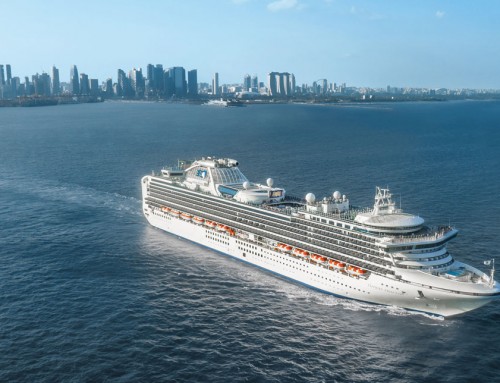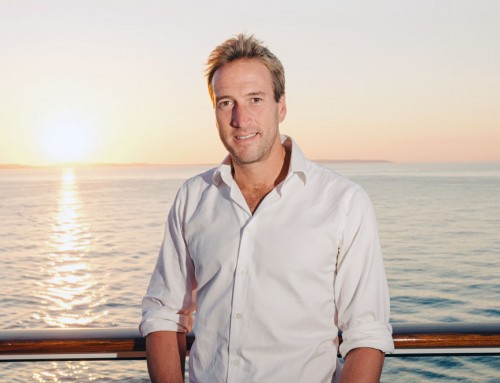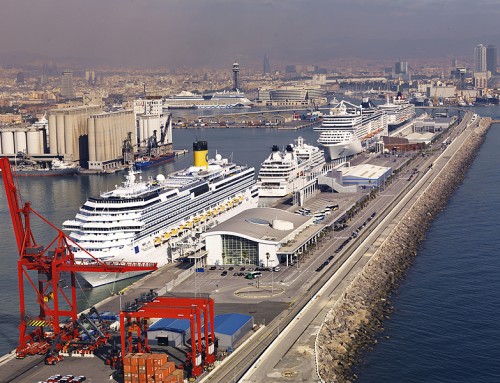Buy today’s Daily Mirror for a National Cruise Week special. There’s my report on Queen Victoria’s cruise to Iceland and Norway, Anton Antonowicz returning to the UK on board Queen Mary 2 after two years working in New York, and Mark Ellis sailing from Southampton to the Med on Grand Princess. The articles are also available at www.mirror.co.uk
It’s not just mums who go to Iceland to save money. More than anywhere
else, the country has been hit by the credit crunch, with its
financial assets disappearing like glaciers in a global meltdown.
Should be good value for a holiday then, away from those pesky
Euro-zone countries where everything now costs more than it used to,
thought the prudent side of my brain.
When I found a way to combine it with a visit to the Norwegian fjords,
in a cruise on board Cunard’s Queen Victoria, it was full steam ahead.
Everything in Norway costs an absolute fortune, and visiting by ship
has two distinct advantages – you can see the coastal scenery at its
best, from the sea, and costs can be contained by sleeping, eating and
drinking on board a luxury hotel which travels from port to port.
What’s more, that hotel takes you from England, so there’s no hassle
with airports, and there’s no need for constant packing and unpacking
en route. Perfect.
Even a three-hour delay in our departure from Southampton’s new Ocean
Terminal, caused by a combination of high winds and the proximity of a
car-carrying ship at the next berth, couldn’t put a damper on the
start of the holiday.
All it meant was that instead of a traditional sailaway party on deck,
we were sitting down for dinner in the Princess Grill restaurant as we
set off down the Solent, looking across to Osborne House – favourite
retreat of the monarch who gave the ship her name.
Two days at sea gave us time to relax and explore our own regal
holiday home. Not as imposing as Cunard’s Queen Mary 2, or as graceful
as the now-retired Queen Elizabeth 2, it is a luxurious retreat in its
own right, complete with a red-plush theatre as grand as anything in
the West End, and a gallery of shops to match the Burlington Arcade.
The Queen’s Room has a 1,000 square foot dance floor and the Golden
Lion makes a fair stab at being a traditional British pub – although
no pub I know on land adds a 15 per cent surcharge to its bar bills.
The comprehensive two-storey library is well-stocked with fiction and
reference books, and there are plenty of computers in the internet
centre – it’s just a shame that trying to connect to the outside world
via satellite is so slow, though that’s not a problem unique to this
ship.
The Commodore Club looking out across the bow is a calm location for
pre-dinner cocktails or for late evening drinks, and is convenient for
Churchill’s cigar lounge, the only place on board where smoking is
allowed indoors, apart from three tables by the casino bar.
A few decks below is the spa and fitness centre for those looking for
somewhere to work off the excess pounds that every cruise adds to the
waist – pounding a treadmill or sweating on a cross-trainer while
gazing out to sea.
During the journey to Reykjavik we made up two of the three hours lost
on departure. A free shuttle bus from the cruise terminal took us on
the 15-minute journey to the city centre, and a 3,000 kronur (£14.50)
tour on a Citysightseeing red double-decker bus
(www.city-sightseeing.com) took us on a 60-minute trip round the main
sights.
If we had chosen, we could have stopped at The Pearl – an
entertainment complex with a revolving restaurant inside a translucent
dome on top of a collection of giant hot water tanks which harvest
volcanic energy from deep underground – and caught another bus to
complete the tour.
But we stayed on board, drove past the striking church tower of the
Hallgrimskirkja, with its concrete columns cast to resemble natural
basalt lava formations – unfortunately hidden behind scaffolding this
year – and then headed to the harbour to visit the whale watching
centre.
The following day the ship was at anchor off Grundarfjordur and
passengers were taken ashore in tenders for excursions round the
rugged Snaefellsnes peninsula.
Like competitors in a World’s Strongest Man contest, we lifted
boulders once used to test the strength of fishermen; got close enough
to smell the acrid guano from nesting kittiwakes and their chicks at
Anarstapi, where we were also dive-bombed by bad-tempered Arctic
terns; and looked up at the imposing Snaefellsjokull glacier, from
which Jules Verne’s Professor Lidenbrock began his adventures in
Journey to the Centre of the Earth.
Back on the ship that evening I discovered our neighbours at the next
table in the restaurant had taken a hire car right up to the snowline,
but had stopped short of renting a skidoo to go further.
Then it was on to Akureyri, the capital of northern Iceland, and a
40-minute drive to Godafoss, the Waterfall of the Gods, where vast
volumes of water from the Vatnajokull glacier plunge 36 feet into a
canyon, and where an Icelandic chieftain threw pagan effigies into the
torrent when the island converted to Christianity a thousand years
ago.
It was our last stop in Iceland, and the nearby souvenir shop hit
paydirt with a horde of cruise ship passengers desperate to offload
local currency which would be virtually worthless when we left the
island.
At least we were doing our best to shore up the flagging economy.
Another day at sea gave us chance to prepare for a hectic round of
sightseeing once we reached Norway, with five ports of call in as many
days.
The pretty art nouveau town of Ålesund was followed by Geirangerfjord,
where the scenery is so spectacular it is a UNESCO World Heritage
site.
All the protection offered by that classification will not, however,
be enough to save the village at the head of the fjord from
destruction when – as will inevitably happen at some time in the
future – a giant slice of crumbling glacial cliff plunges into the
sea, triggering a tsunami.
In Bergen we saved time for the following day by queuing in the
visitor information centre to buy tickets (230 kroner, about £22 each)
for the Flåmsbanen, the steepest adhesion railway in the world, which
climbs 865metres from sea level at Flåm to the station at Myrdal, 20
kilometres away on the mainline from Oslo.
The train stops at the colossal Kjosfossen waterfall, where a couple
of decidedly damp maidens danced in the spray, presumably to appease
the local trolls.
Our last stop was in Stavanger, where many passengers left the Queen
Victoria to clamber aboard a smaller boat for a cruise along Lysefjord
to gaze up at the spectacular Pulpit Rock. I doubt they saw a great
deal, because that was the only day of the entire two weeks that we
had any serious rain, and the top of the 604-metre sheer cliff must
surely have been lost in the clouds.
Farewell Norway, hello packing, as we set off back to Southampton.
Thankfully, we had a day of sailing past oil and gas rigs in the
placid North Sea in which to prepare for our return home.
And that’s when the only downside to ex-UK cruising became apparent.
After an early breakfast on board, disembarkation and the drive home
went so smoothly that, all too soon, I was having lunch back in the
office.





Leave A Comment